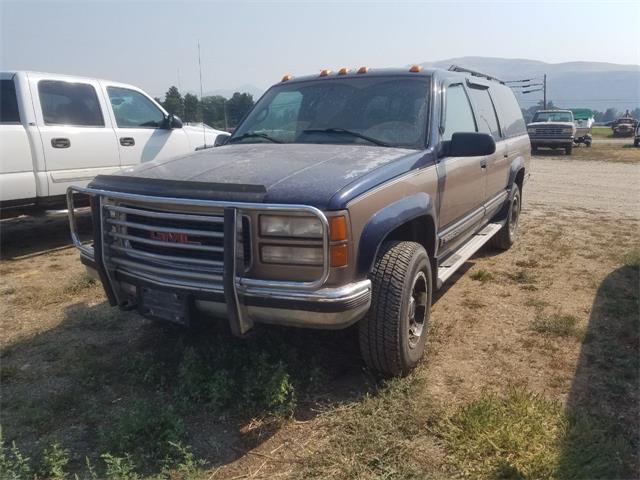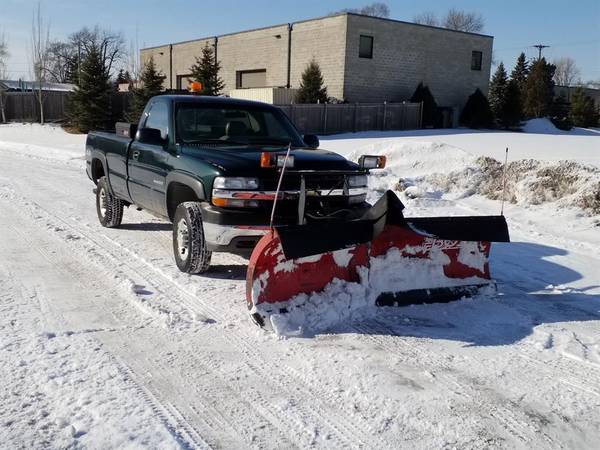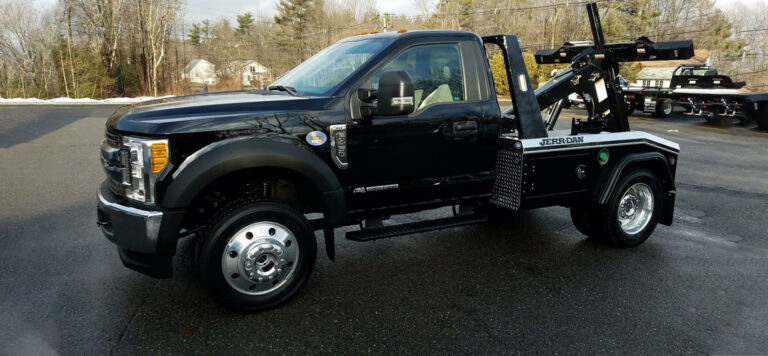Used Suburban Trucks For Sale: Your Ultimate Guide to Finding the Perfect Full-Size SUV
Used Suburban Trucks For Sale: Your Ultimate Guide to Finding the Perfect Full-Size SUV cars.truckstrend.com
The Chevrolet Suburban stands as an icon of American automotive prowess, a testament to enduring utility, vast passenger capacity, and formidable towing capabilities. For decades, it has been the go-to vehicle for large families, adventurers needing ample cargo space, and anyone requiring a robust, reliable workhorse. While a brand-new Suburban represents a significant investment, the market for used Suburban trucks for sale offers an incredibly attractive alternative, providing all the benefits of this legendary SUV at a fraction of the cost.
This comprehensive guide will navigate the landscape of pre-owned Suburbans, helping you understand their enduring appeal, what to look for, how to buy smart, and what to expect in terms of ownership. Whether you’re hauling a boat, a little league team, or simply seeking unparalleled road trip comfort, a used Suburban might just be your perfect match.
Used Suburban Trucks For Sale: Your Ultimate Guide to Finding the Perfect Full-Size SUV
Why Choose a Used Suburban? Unpacking the Value Proposition
Opting for a used Suburban isn’t just about saving money; it’s about smart value. The Suburban’s robust body-on-frame construction, powerful V8 engines, and durable interiors are designed for longevity, making them excellent candidates for a second (or even third) owner.
Key Benefits of Buying Used:
- Significant Cost Savings: The most obvious advantage. New vehicles depreciate rapidly in their first few years. Buying used means someone else has absorbed that initial depreciation, allowing you to get more vehicle for your dollar.
- Proven Reliability: Many common issues for a particular model year or generation are often well-documented, allowing buyers to know what to look for. Furthermore, a vehicle that has already accumulated significant mileage and still runs strong is often a testament to its inherent durability.
- Versatility Unmatched: The Suburban excels in virtually every role. It comfortably seats up to nine passengers, offers cavernous cargo space even with all seats up (especially in newer generations), and boasts impressive towing capacities, making it ideal for boats, RVs, or utility trailers.
- Feature Accessibility: Modern amenities like advanced infotainment systems, safety features, and luxury trim options become more affordable on the used market. You can often get a higher trim level or more features in a used model for the price of a base new one.
- Lower Insurance Costs: Generally, older vehicles cost less to insure than their brand-new counterparts.

A used Suburban is an ideal choice for large families, businesses needing a dependable transport solution, outdoor enthusiasts with gear to haul, or anyone who values space, power, and utility without the new car premium.
Understanding the Generations: A Buyer’s Guide
The Chevrolet Suburban has evolved significantly over its long history. Understanding the different generations can help you narrow down your search based on features, budget, and desired performance.

- Tenth Generation (GMT800: 2000-2006): These models are highly popular on the used market due to their affordability and rugged reliability. They typically feature 5.3L or 6.0L V8 engines. While interior tech is dated, they offer solid mechanicals and are relatively easy to maintain. Look out for rust, especially in colder climates.
- Eleventh Generation (GMT900: 2007-2014): A significant redesign brought improved aerodynamics, a more refined ride, and updated interiors. These Suburbans often come with the Active Fuel Management (AFM) system on the 5.3L engine, which can be a point of concern for some buyers (oil consumption, lifter issues). They offer more modern safety features and better crash test ratings than their predecessors.
- Twelfth Generation (K2XX: 2015-2020): These models marked another substantial leap in refinement, interior quality, and technology. The standard engine is typically a 5.3L V8 (still with AFM, though improvements were made), with a 6.2L V8 available on higher trims for more power. Apple CarPlay/Android Auto became available, along with advanced driver-assist systems. They offer a smoother, quieter ride.
- Thirteenth Generation (GMT T1XX: 2021-Present): The newest generation introduced independent rear suspension, dramatically improving ride comfort, handling, and third-row legroom. Engine options include the 5.3L V8, 6.2L V8, and for the first time, a 3.0L Duramax turbo-diesel. While still relatively new on the used market, these will offer the most modern features and comfort, albeit at a higher price point.

Key Considerations by Generation:
- Engines: The 5.3L V8 is the most common and generally reliable workhorse. The 6.0L (GMT800/900) and 6.2L (K2XX/T1XX) offer more power, especially for heavy towing. The 8.1L V8 was available in early 2000s models for maximum towing but is very rare and a gas guzzler. The 3.0L Duramax diesel (2021+) offers excellent fuel economy and torque.
- Drivetrain: Most Suburbans are available in 2WD (rear-wheel drive) or 4WD (four-wheel drive). 2WD offers slightly better fuel economy, while 4WD provides traction for adverse weather or light off-roading.
- Trim Levels: LS (base), LT (mid-range with more features), Premier/LTZ (luxury-oriented), and High Country (top-tier on newer models). Choose based on your desired features and budget.
What to Look For: A Comprehensive Pre-Purchase Checklist
Buying a used vehicle requires diligence. A thorough inspection can save you thousands in future repairs.
-
Vehicle History Report (CarFax/AutoCheck): This is non-negotiable. Look for:
- Accident History: Even minor accidents can lead to hidden damage.
- Service Records: Regular maintenance is a strong indicator of a well-cared-for vehicle.
- Odometer Discrepancies: Ensure the mileage is consistent.
- Title Issues: Avoid salvage, flood, or rebuilt titles unless you fully understand the risks and have a professional inspection.
- Number of Owners: Fewer owners with good service records is generally better.
-
Mechanical Inspection:
- Engine: Check for leaks (oil, coolant), strange noises (ticking, knocking), excessive smoke from the exhaust. Look under the oil cap for milky residue (sign of coolant in oil).
- Transmission: Shifts should be smooth, without clunking or slipping. Check fluid level and color (should be red, not dark brown or burnt).
- Brakes: Check pad thickness, rotor condition (no deep grooves or warping). Test for firm pedal feel.
- Suspension: Look for sagging, uneven stance, or excessive bouncing. Listen for clunks or squeaks over bumps.
- Tires: Check tread depth and even wear. Uneven wear can indicate alignment issues.
- Steering: Check for excessive play or unusual noises when turning.
- Fluids: Check all fluid levels (oil, coolant, power steering, brake fluid) and condition.
-
Exterior Inspection:
- Rust: Pay close attention to wheel wells, rocker panels, door bottoms, tailgate, and especially the frame underneath. Rust can be a major structural issue.
- Body Damage: Look for dents, scratches, misaligned panels, or mismatched paint, which could indicate unreported accidents.
- Glass: Check all windows and windshield for cracks or chips.
-
Interior Inspection:
- Upholstery: Check for rips, tears, excessive wear, or strange odors (smoke, mildew).
- Electronics: Test every button, switch, light, and feature: infotainment, AC/heating (ensure both hot and cold air work), power windows, power locks, mirrors, sunroof.
- Dashboard: Look for cracks (common on older GMT800/900 models).
- Under the Floor Mats: Check for signs of water intrusion or mildew.
-
Test Drive:
- Drive on various road types (city, highway, bumps).
- Listen for any unusual noises (squeaks, rattles, clunks, hums).
- Test acceleration, braking (ensure it stops straight), and steering.
- Test 4WD (if applicable) in a safe area.
- Ensure the engine reaches normal operating temperature and that the transmission shifts correctly through all gears.
-
Professional Pre-Purchase Inspection (PPI): Highly recommended. A trusted, independent mechanic will put the vehicle on a lift and perform a detailed inspection, identifying potential issues you might miss. This small investment can save you from costly repairs down the road.
Navigating the Market: Where to Find Your Used Suburban
The market for used Suburbans is vast. Knowing where to look can streamline your search.
- Dealerships (Franchise & Independent):
- Pros: Often offer certified pre-owned (CPO) options with warranties, easier financing, trade-in options, and reconditioned vehicles.
- Cons: Generally higher prices due to overhead and reconditioning costs.
- Private Sellers:
- Pros: Often the lowest prices, more room for negotiation. You can often get a better sense of how the vehicle was cared for directly from the owner.
- Cons: "As-is" sales mean no warranty or recourse for hidden issues. Financing can be more challenging. More legwork for inspection and paperwork.
- Online Marketplaces:
- Major Sites: Autotrader, Cars.com, Edmunds, CarGurus offer extensive listings from both dealers and private sellers, with advanced search filters.
- Local Marketplaces: Facebook Marketplace, Craigslist can yield local gems, often from private sellers. Be cautious of scams and always meet in a safe, public location.
- Auctions:
- Pros: Potential for very low prices.
- Cons: High risk. Vehicles are typically sold "as-is" with limited inspection time. Best for experienced buyers or those with mechanic connections.
Ownership Considerations: Beyond the Purchase Price
Buying a used Suburban is just the first step. Understanding the ongoing costs is crucial for a realistic budget.
- Maintenance Costs: Suburbans are generally reliable, but like any large vehicle, they require consistent maintenance. Parts are widely available and relatively affordable due to their popularity. Expect routine oil changes, tire rotations, brake service, and occasional larger repairs (e.g., suspension components, exhaust, or addressing common engine issues like AFM lifters on some models).
- Fuel Economy: This is often the biggest ongoing cost. While newer models have improved, Suburbans are large, heavy vehicles with V8 engines. Expect average MPG in the low to mid-teens (e.g., 14-18 MPG combined depending on year, engine, and drivetrain). Diesel models (2021+) offer significantly better fuel economy.
- Insurance Costs: Factors like vehicle age, your driving record, location, and desired coverage will influence your premium. Get insurance quotes before finalizing your purchase.
- Common Issues (by generation):
- GMT800 (2000-2006): Rust on body and frame, fuel pump failure, intake manifold gaskets, dashboard cracks, ABS module issues.
- GMT900 (2007-2014): Active Fuel Management (AFM) related issues (excessive oil consumption, collapsed lifters, camshaft wear), dashboard cracks, power steering pump leaks, AC system issues.
- K2XX (2015-2020): While improved, AFM issues can still occur, infotainment glitches, potential for excessive brake wear.
- All Generations: Wheel bearing failure, ball joint wear, universal joint wear, and general wear and tear items related to a heavy vehicle.
Tips for a Successful Purchase
- Set a Realistic Budget: Include the purchase price, sales tax, registration fees, potential repairs, and initial maintenance (e.g., fluid changes).
- Do Your Homework: Research specific model years you’re interested in for known issues and consumer reviews.
- Be Patient: Don’t jump on the first deal. The right Suburban for you will come along.
- Negotiate Confidently: Be prepared to walk away if the deal isn’t right. Use any identified issues from your inspection as leverage.
- Get Everything in Writing: Ensure all agreements, warranties (if any), and conditions are clearly documented.
Used Suburban Trucks For Sale: Representative Price Guide
It’s crucial to understand that prices for used Suburbans vary widely based on year, mileage, condition, trim level, engine, 2WD/4WD, and geographic location. The table below provides a representative range to give you a general idea, assuming good condition and average mileage for the given year range. Always consult current market listings for precise pricing.
| Year Range | Generation | Average Price Range (USD) | Key Features / Notes |
|---|---|---|---|
| 2000-2006 | GMT800 | $5,000 – $12,000 | Affordable, rugged, basic tech. Look for rust. |
| 2007-2014 | GMT900 | $10,000 – $22,000 | More refined, improved ride, updated interior. Check for AFM issues on 5.3L. |
| 2015-2020 | K2XX | $20,000 – $45,000 | Modern styling, advanced tech, refined interior. Higher trims can be pricey. |
| 2021-Present | T1XX | $45,000 – $75,000+ | Independent rear suspension, diesel option, cutting-edge tech. Still relatively new on used market. |
Prices are estimates and subject to change based on market conditions, vehicle specific condition, mileage, and features.
Frequently Asked Questions (FAQ) about Used Suburban Trucks
Q1: What is considered high mileage for a used Suburban?
A1: For a well-maintained Suburban, 150,000 to 200,000 miles is not uncommon. Many can exceed 250,000-300,000 miles with proper care. High mileage itself isn’t necessarily a deal-breaker if maintenance records are excellent and a pre-purchase inspection is clean.
Q2: Are older Suburbans reliable?
A2: Yes, generally. Older generations like the GMT800 (2000-2006) are known for their robust mechanicals. While they lack modern amenities, their simplicity can mean fewer complex issues. Regular maintenance is key for any age.
Q3: What’s the best engine for towing in a Suburban?
A3: For older models, the 6.0L V8 or the rare 8.1L V8 offered the most towing power. For newer generations (2015+), the 6.2L V8 is the top gasoline choice. The 3.0L Duramax turbo-diesel (2021+) offers excellent low-end torque for towing combined with impressive fuel economy.
Q4: Should I buy a 2WD or 4WD Suburban?
A4: If you live in an area with snow, ice, or frequently encounter unpaved roads, 4WD offers superior traction and peace of mind. If you primarily drive on paved roads in mild climates, 2WD is sufficient, slightly more fuel-efficient, and typically costs less upfront.
Q5: How much can a Suburban typically tow?
A5: Towing capacity varies by year, engine, drivetrain, and specific configuration, but most Suburbans can tow between 6,000 and 8,300 pounds. Always check the specific vehicle’s owner’s manual or a reliable towing guide for its exact capacity.
Q6: What are common rust spots to check on a used Suburban?
A6: Key areas for rust include rocker panels, wheel wells, the bottom edges of doors, the tailgate (especially around the license plate lights), and the vehicle’s frame underneath. Pay close attention to the rear sections of the frame.
Q7: Is it expensive to maintain a Suburban?
A7: Routine maintenance costs are generally reasonable for a domestic full-size SUV. Parts are widely available. However, being a large vehicle, some repairs (e.g., suspension components, tires) can be more expensive than for smaller cars. Fuel costs will be your biggest ongoing expense.
Conclusion
The Chevrolet Suburban has cemented its legacy as a formidable and versatile vehicle, offering an unparalleled blend of passenger capacity, cargo volume, and towing prowess. For those seeking these attributes without the premium price tag of a new model, the market for used Suburban trucks for sale presents a compelling opportunity.
By understanding the different generations, diligently performing a comprehensive inspection, leveraging professional advice, and knowing where to search, you can confidently navigate the used market. A well-chosen pre-owned Suburban isn’t just a vehicle; it’s an investment in reliable transportation for years to come, ready for family adventures, demanding work, or simply the comfort of ample space on the open road. With careful consideration and a smart buying strategy, your perfect used Suburban is out there, waiting to embark on its next journey with you.






